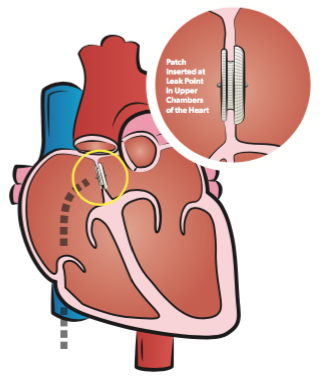 What is ASD/PFO closure?
What is ASD/PFO closure?
ASD/PFO closure is a percutaneous catheter based method for ASD & PFO defects. Both of these defects can present either enlargement or stroke.
ASD (Atrial Septal Defect) is a hole in the wall that separates the top two chambers of the heart. This defect allows oxygen-rich blood to leak into the oxygen-poor blood chambers in the heart. ASD is a defect in the septum between the heart’s two upper chambers (atria).
Patent foramen ovale (PFO) is a hole in the heart that didn’t close the way it should after birth. During fetal development, a small flap-like opening — the foramen ovale — is normally present in the wall between the right and left upper chambers of the heart (atria).
How does it work?
Most patients undergo a minimally-invasive procedure in which the surgeon makes a small incision and snakes a narrow tube (catheter) through a blood vessel into the heart. The surgeon then sends a collapsible patch – a metal prosthesis – through the catheter, and inserts it at the leak point.
Results and Expectations
PFO/ASD closure with a catheter is an outpatient procedure that takes about an hour. Patients receive a local anesthetic and usually can return to work in a few days.